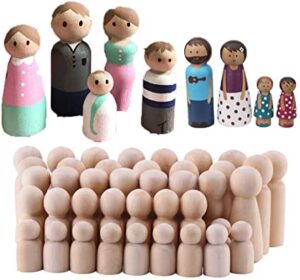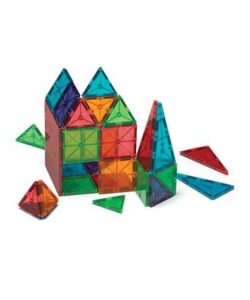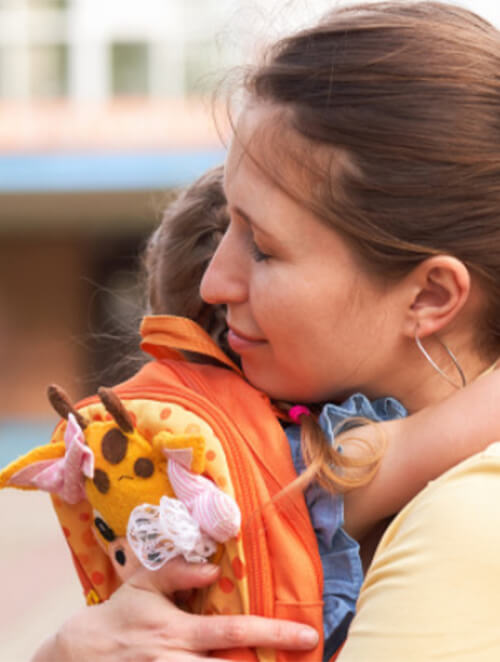What are Open-Ended Toys and how does Open-ended play benefit your child?
 16543
16543

super easy
In this “technically” adequate world, we, as parents, try our best to keep our children away from gadgets, at least for the first few years. We spend too much money on plastic and electronic toys from which our children tend to get bored pretty quickly. And it is not really their fault.
For instance, you bought an electronic remote-control car for your kid. He can move it forward, sideways, or reverse it at most. After that, the toy has served its purpose, and it is of no use to the kid. He will simply get bored, put down the toy, and ask for a new one again. It creates mental havoc for the child and you as well when he has to sit at home with limited playing options to explore. With battery-driven and plastic toys, there is no room left for exploration, creativity, and imagination; buying an excess number of close-ended plastic toys can burn a hole in your pocket, they also take up a lot of space, and they are not doing any favors for your child except entertaining them for few hours.
So how do we get our children to stay focused, play independently for long periods of time (so you can do some work and relax), keep them entertained, and limit screen time? We might have a perfect solution for all these problems! Let’s talk about the popular concept of OPEN-ENDED PLAY, which is absolutely brilliant to engage our children for long periods and promotes the child’s ability to think.
What is Open-ended play?
Open-ended play is an approach to playtime with no end goal, no predetermined destination, no expected outcomes, no limitations, just endless possibilities. There are no set guidelines, instructions, rules, or a “right” way to play with open-ended games. This type of play encourages the child to use his originality and imagination freely and to play in whatever way that feels creatively possible. With open-ended toys, you are giving the child the tools to play and think independently and freely.
How does Open-ended play benefit your child?
- When children are handed an open-ended toy, which does not have any specified guideline or rule on how to play, they are encouraged or forced to use their imagination and make a creative decision on how to use the toy.
- When they build something with their own creativity and imagination, it instills leadership skills, boosts confidence, encourages problem-solving and decision-making skills.
- Open-ended toys can be used in a variety of ways and provide never-ending opportunities for the child to explore and engage in critical thinking and problem solving while having lots of fun!
- Open-ended play provides a relaxed and free environment, which gives them the confidence to experiment with new ideas and learn new concepts.
- Open-ended materials are beneficial for intellectual growth and developing cognitive skills like short- and long-term memory, attention, logic and reasoning, visual processing, and processing speed.
- The open-ended play holds a child’s attention for longer periods of time, so you can actually complete some work without your child pulling on your leg all the time.
There are tons of benefits of adopting open-ended play in your child’s daily play routine other than just encouraging creativity and imagination. Open-ended play reassures both fun and learning.
Some of our favorite Open-ended toys!
1.Building Blocks

Building blocks are a great way to introduce your child to open-ended play. They don’t have sharp edges, so they are safe to play with. They are non-toxic as well (made from natural materials). From natural wood to colorful blocks, from perfect shapes to irregular ones, building blocks come in many different types. It doesn’t matter what kind of block set you have; it is important to just include block play in your child’s play routine. It is the most durable, sustainable, and versatile open-ended toy. You will be amazed to see the things your child builds and constructs with those blocks. It encourages him to take risks when building something; it boosts his confidence when he implements his own idea; it’s great for co-operative play, hand-eye coordination, and creative play.
2. Play Silks

Play silks and fabrics go hand in hand with sensory play. They come in different sizes, patterns, and colors. They can be used as a blanket or a cape or wings or anything you can think of. Children find it really engaging and comforting because of the softness of the material (It’s a sensory delight!).
3. Peg Dolls and Animal Figurines
 Peg dolls are a Waldorf inspired toy. The dolls don’t have any expression on their face, so it’s left up to the imagination of the kid. The dolls can be whatever the child wants them to be. It can be a boy or a girl or a king or an old man; the potential is endless. There are a lot of different scenarios, characters, and stories your child can imagine when playing with a peg doll set. There is no set outcome when it comes to playing with figurines and peg dolls.
Peg dolls are a Waldorf inspired toy. The dolls don’t have any expression on their face, so it’s left up to the imagination of the kid. The dolls can be whatever the child wants them to be. It can be a boy or a girl or a king or an old man; the potential is endless. There are a lot of different scenarios, characters, and stories your child can imagine when playing with a peg doll set. There is no set outcome when it comes to playing with figurines and peg dolls.
4. Maganatiles
 Magnetic tiles are a step further from building blocks. They are plastic squares or triangles; they come in different sizes, shapes, and colors. They are transparent, so you can teach your child about color mixing by holding the tiles against each other. They are magnetic on all sides, so it’s easy for children to attach and detach and build a structure or anything they wish. These are really fun to play with and leave plenty of room for the child’s input.
Magnetic tiles are a step further from building blocks. They are plastic squares or triangles; they come in different sizes, shapes, and colors. They are transparent, so you can teach your child about color mixing by holding the tiles against each other. They are magnetic on all sides, so it’s easy for children to attach and detach and build a structure or anything they wish. These are really fun to play with and leave plenty of room for the child’s input.
5. Wooden Balance Board
 It is a huge wooden arch, and children find it really cool to play with. The child can stand on it and maintain balance, they can use it as a slide, they can flip it over, and it becomes a bridge, and if he fits, then they can lie down on it too. It helps with movement play and the vestibular system to promote balance. It has a lot of applications and will keep your child engaged and entertained.
It is a huge wooden arch, and children find it really cool to play with. The child can stand on it and maintain balance, they can use it as a slide, they can flip it over, and it becomes a bridge, and if he fits, then they can lie down on it too. It helps with movement play and the vestibular system to promote balance. It has a lot of applications and will keep your child engaged and entertained.
Also Read:
Waldorf Toys – A New and Unknown Concept for Parents that you should Explore!
9 DVD’s to choose from for the next screening of kids Movie Time





Leave a Reply